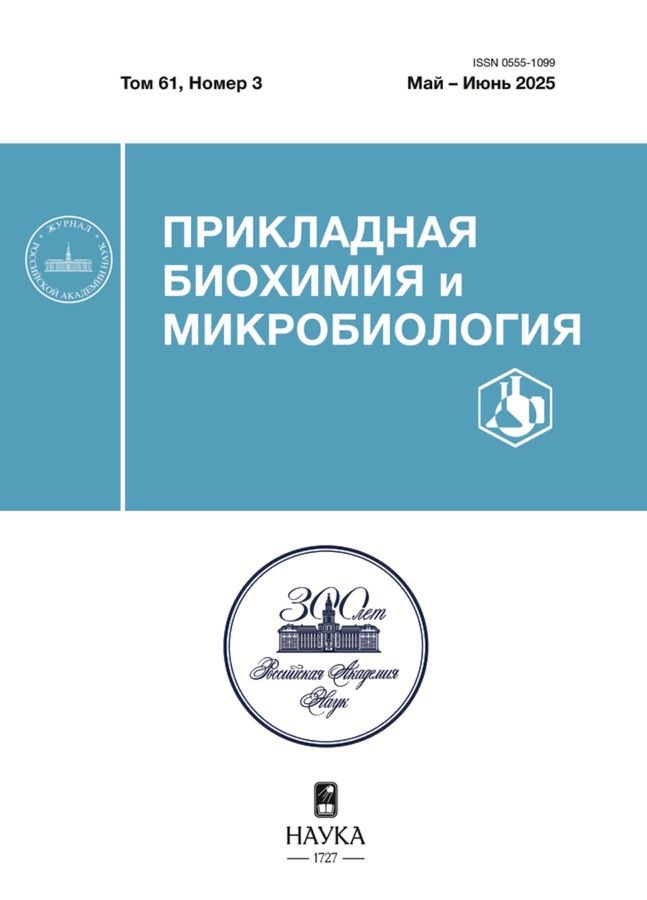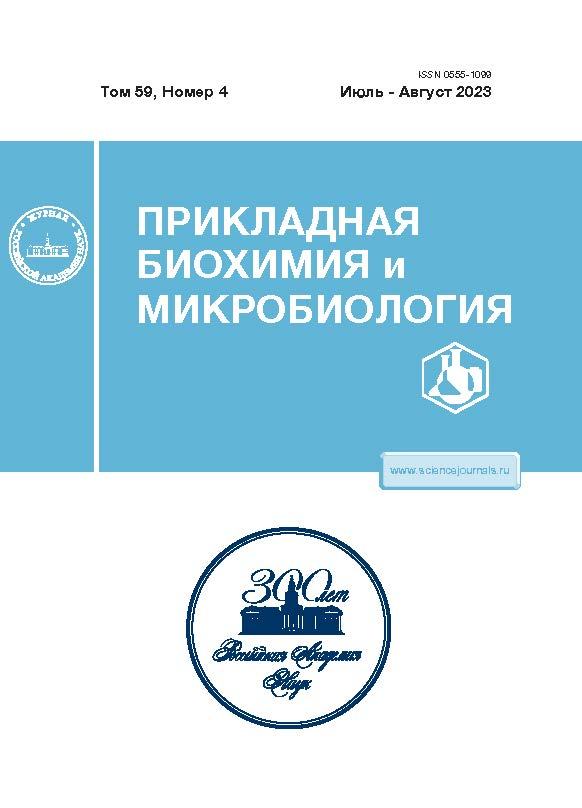Ацилированные флавоноиды из Cucumis sativus ингибируют активность панкреатической липазы человека
- Авторы: Оленников Д.Н.1, Кащенко Н.И.1
-
Учреждения:
- Институт общей и экспериментальной биологии СО РАН
- Выпуск: Том 59, № 4 (2023)
- Страницы: 401-409
- Раздел: Статьи
- URL: https://cardiosomatics.ru/0555-1099/article/view/674613
- DOI: https://doi.org/10.31857/S0555109923040104
- EDN: https://elibrary.ru/QZMGOJ
- ID: 674613
Цитировать
Полный текст
Аннотация
Нарушения липидного обмена представляют собой большую группу заболеваний, для лечения которых применяются различные стратегии, в том числе использование ингибиторов панкреатической липазы, что позволяет снизить поступление и адсорбцию липидов. В настоящем исследовании впервые показано, что отходы сельскохозяйственного культивирования Cucumis sativus (огурец посевной) могут быть источником для получения эффективных ингибиторов липазы. В результате хроматографического разделения из листьев C. sativus были выделены семь ацилированных флавоноидов, в том числе три новых производных изовитексина, охарактеризованных по данным УФ, ЯМР спектроскопии и масс-спектрометрии как изовитексин-2"-O-глюкозид-6"-O-ферулат (1), изовитексин-2"-O-глюкозид-6"-O-п-кумарат (2) и изовитексин-2"-O-(6"'-O-ферулоил)-глюкозид-6"-O-ферулат (3). Результаты количественной ВЭЖХ показали, что суммарное содержание ацилированных флавоноидов в листьях российских сортов C. sativus составило 3.78–7.44 мг/г. Выделенные соединения продемонстрировали способность к ингибированию панкреатической липазы человека, причем эффективность флавоноида 3 оказалась наибольшей и превышала активность препарата сравнения (орлистата). Проведенные исследования показали, что листья C. sativus можно использовать для выделения биологически активных фитокомпонентов, обладающих гиполипидемической активностью.
Ключевые слова
Об авторах
Д. Н. Оленников
Институт общей и экспериментальной биологии СО РАН
Автор, ответственный за переписку.
Email: olennikovdn@mail.ru
Россия, 670047, Улан-Удэ
Н. И. Кащенко
Институт общей и экспериментальной биологии СО РАН
Email: olennikovdn@mail.ru
Россия, 670047, Улан-Удэ
Список литературы
- Volkova I.N. // Geograph. Environ. Living Syst. 2021. V. 1. P. 93–109. https://doi.org/10.18384/2712-7621-2021-1-93-109
- Sharipov Sh.I., Ibragimova B.Sh. // Econ. Anal. Theory Pract. 2018. V. 17. P. 1340–1355. https://doi.org/10.24891/ea.17.12.1340
- Седых Т.В., Погребняк С.В. // Вестник ОмГАУ. 2016. № 3. С. 53–58.
- Korottseva I.B., Belov S.N. // Veget. Crops Russ. 2022. V. 6. P. 29–34. https://doi.org/10.18619/2072-9146-2022-6-29-34
- Khan A., Mishra A., Hasan S.M., Usmani A., Ubaid M., Khan N., Saidurrahman M. // J. Complement. Integr. Med. 2022. V. 19. P. 843–854. https://doi.org/10.1515/jcim-2020-0240
- Mukherjee P.K., Nema N.K., Maity N., Sarkar B.K. // Fitoterapia. 2013. V. 84. P. 227–236. https://doi.org/10.1016/j.fitote.2012.10.003
- Olennikov D.N., Kashchenko N.I. // Chem. Nat. Compd. 2023. V. 58. P. 324–329. https://doi.org/10.1007/s10600-022-03858-9
- Lowe M.E. // Ann. Rev. Nutr. 1997. V. 17. P. 141–158. https://doi.org/10.1146/annurev.nutr.17.1.141
- Zhu G., Fang Q., Zhu F., Huang D., Yang C. // Front. Genet. 2021. V. 12. 693538. https://doi.org/10.3389/fgene.2021.693538
- Liu T.-T., Liu X.-T., Chen Q.-X., Shi Y. // Biomed. Pharmacother. 2020. V. 128. 110314. https://doi.org/10.1016/j.biopha.2020.110314
- Li M., Chen Y., Ruan J., Wang W., Chen J., Zhang Q. // Curr. Res. Food. Sci. 2023. V. 6. 100424. https://doi.org/10.1016/j.crfs.2022.100424
- Olennikov D.N., Khandy M.T., Chirikova N.K. // Horticulturae. 2022. V. 8. 975. https://doi.org/10.3390/horticulturae8100975
- Olennikov D.N., Chemposov V.V., Chirikova N.K. // Foods. 2022. V. 11. 2801. https://doi.org/10.3390/foods11182801
- McNally D.J., Wurms K.V., Labbé C., Quideau S., Bélanger R.R. // J. Nat. Prod. 2003. V. 66. P. 1280–1283. https://doi.org/10.1021/np030150y
- Abou-Zaid M.M., Lombardo D.A., Kite G.C., Grayer R.J., Veitch N.C. // Phytochemistry. 2001. V. 58. P. 167–172. https://doi.org/10.1016/s0031-9422(01)00156-x
- Kashchenko N.I., Jafarova G.S., Isaev J.I., Olennikov D.N., Chirikova N.K. // Plants. 2022. V. 11. 2126. https://doi.org/10.3390/plants11162126
- Olennikov D.N., Chirikova N.K. // Chem. Nat. Compd. 2019. V. 55. P. 1032–1038. https://doi.org/10.1007/s10600-019-02887-1
- Olennikov D.N., Kashchenko N.I. // Appl. Biochem. Microbiol. 2023. V. 59. P. 59–67. https://doi.org/10.1134/S0003683823010064
- Olennikov D.N., Kashchenko N.I. // Chem. Nat. Compd. 2020. V. 56. P. 1026–1034. https://doi.org/10.1007/s10600-020-03220-x
- An L., Wang J., Liu Y., Chen T., Xu S., Feng H., Wang X. // Proc. SPIE. 2003. V. 4896. P. 223–231. https://doi.org/10.1117/12.468231
- Insanu M., Zahra A.A., Sabila N., Silviani V., Haniffadli A., Rizaldy D., Fidrianny I. // Maced. J. Med. Sci. 2022. V. 10. P. 616–622. https://doi.org/10.3889/oamjms.2022.8337
- Zhao L., Huang Y., Paglia K., Vaniya A., Wancewicz B., Keller A.A. // Environ. Sci. Technol. 2018. V. 52. P. 7092–7100. https://doi.org/10.1021/acs.est.8b00742
- Custers E.M.E., Kiliaan J.A. // Progr. Lipid Res. 2022. V. 85. 101144. https://doi.org/10.1016/j.plipres.2021.101144
- Rahim A.T.M.A., Takahashi Y., Yamaki K. // Food Res. Int. 2015. V. 75. P. 289–294. https://doi.org/10.1016/j.foodres.2015.05.017
- Buchholz T., Melzig M. // Planta Med. 2015. V. 81. P. 771–783. https://doi.org/10.1055/s-0035-1546173














